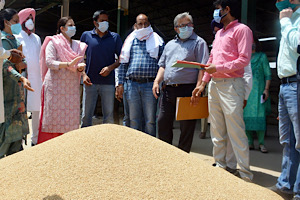Summary
The states in India have already initiated several reforms to speed up economic recovery post COVID-19. These could well lead to several demand-driven reforms at the central level.
The initiatives for economic recovery in India post COVID-19 recovery appear to be emanating from state-specific initiatives as well changes in the behaviour of the workers.
The first set of initiatives came from states like Punjab and Madhya Pradesh, where the COVID-19 restrictions could have caused a serious hindrance to the harvesting of wheat, which usually takes place in the middle of April. The Agricultural Produce Marketing Act (APMC) in most states prescribes that the farmer should bring his produce to designated markets, and that the buyers need prior licenses. Due to the nation-wide lockdown this year, this would have been impossible, given the problems of labour, logistics and storage. To prevent wastage, states have amended their acts to permit private mandis (markets) to operate and even for the farmer to store the marketed produce with himself for physical delivery once the restrictions are removed. Thus, wheat was harvested and stored successfully with output hitting unprecedented levels. As a result, India today has a record 73 million tons of food grains in storage, far more than it can consume in a year. The APMC changes are one of the important economic reform measures that the central government has been urging the states to adopt for several years. The COVID-19 crisis has enabled that to happen.
Several states have permitted the opening up of its industries, especially in the small-scale sector, with restrictions on the number of employees at work at one time (not more than 50 per cent of the workforce or even less in some states), social distancing, personal hygiene and facilities for food wherever possible, among others. These firms have started getting orders and are also fulfilling earlier commitments. Once they get working, financial concessions and credit would be available with less stringent conditions. The demand from these industries has been to relax the statutory duration of working hours, and they have sought permission to work for 12 hours instead of eight, and in some cases in urban areas, round the clock, with reduced workers. Two states – Uttar Pradesh and Madhya Pradesh – have already notified relaxations and other states are likely to follow. Amending labour laws have been a major issue pending in the agenda of economic reforms in the country. The current situation may well pave the way for this.
There is also the consequence of the reverse migration of the workers from the cities back to their villages. Close to two million people working in the construction, manufacturing, logistics and service sectors have become unemployed and are on their way home. It also appears that the threat of the pandemic may come in waves, with restrictions being periodically introduced in areas and then being lifted. This is likely to have two consequences. First, smaller industries, especially fast-moving consumer goods, pharmaceutical packaging and light engineering services are likely to move to rural and semi-rural areas, away from big towns. This will enable them to be closer to labour supply and it will also insulate them from the period disruptions that urban lockdowns are likely to bring about. This would suit the migrant labourers as well who would be closer to home. Second, given the success in cereal production, there is likely to be a faster shift to value-added crops, especially since the migrant labourers have returned to the villages and some may go back to agriculture.
Reforms and policy changes that note these behavioural changes and provide for incentives in modernising agriculture, providing food processing, cold chain facilities and marketing support can vitalise this sector. At the same time, encouraging relocation of micro, small and medium enterprises to smaller towns could also be an important reform initiative.
The states have already started competing with one another to attract industries that are planning to relocate from China. A number of foreign firms – small and medium – are in discussion with the state governments on this. Eleven states, including Gujarat, Karnataka, Maharashtra and Tamil Nadu, have set up specific task forces to engage with these investors and offer incentives and infrastructure support. Gujarat is leading the pack. Interestingly, the ask from the investors is less for financial incentives and more for a better enabling environment, including rapid clearances, logistics, access to ports and an ease of work. Once again, several states have rolled out fresh ideas and it is likely that these would fit into national incentives. Interestingly, several firms from China are also keen to set up manufacturing facilities in India and are under negotiations at the present time.
The post COVID-19 environment is expected to see changes in behavioural patterns of employers and employees alike, as well as in workflow and supply chains. In fact, some of these changes have started happening right now.
. . . . .
Dr S Narayan is a Visiting Senior Research Fellow at the Institute of South Asian Studies (ISAS), an autonomous research institute at the National University of Singapore (NUS). He is a former Chief Economic Advisor to the Prime Minister of India. He can be contacted at snarayan43@gmail.com. The author bears full responsibility for the facts cited and opinions expressed in this paper.
-
 More From :
More From :
-
 Tags :
Tags :
-
 Download PDF
Download PDF


